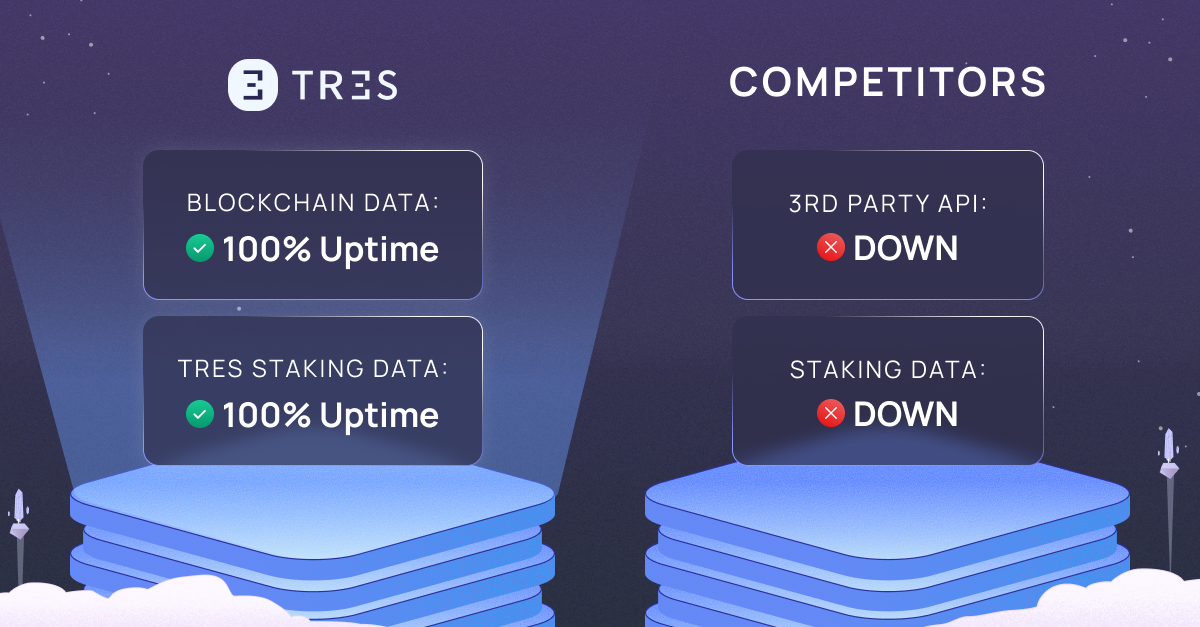Understanding Web3 in Corporate Finance
Web3 sounds like tech jargon, but it’s actually a straightforward concept with profound implications for how companies manage money. Think of it as the internet’s evolution from reading information (Web1) and interacting with platforms (Web2) to owning and controlling digital assets directly (Web3).
In corporate finance terms, Web3 means your company can participate in financial systems that don’t require traditional intermediaries like banks for every transaction. Instead of routing a payment through multiple financial institutions, each taking time and fees, you could potentially send funds directly to suppliers or partners through blockchain networks.
Defining Web3 and Its Core Components
Web3 operates on three fundamental pillars that reshape traditional finance. First, decentralization removes single points of control, distributing financial operations across networks of computers rather than relying on individual institutions. Second, blockchain technology creates permanent, transparent records of all transactions that multiple parties can verify independently. Third, smart contracts automate financial agreements, executing payments and transfers when predetermined conditions are met.
These components work together to create what finance professionals call programmable money. Imagine setting up a supplier payment that automatically releases funds when goods are delivered and verified, without requiring manual approval from accounting. Or consider establishing a corporate treasury that diversifies across multiple blockchain-based assets, reducing counterparty risk while maintaining liquidity.
The practical impact becomes clearer when you consider current pain points in corporate finance. Cross-border payments still take 3-5 business days and cost 2-4% in fees. Compliance reporting requires extensive manual verification. Access to alternative funding sources remains limited by geographic and regulatory boundaries. Web3 addresses each of these challenges through different mechanisms.
Blockchain Technology’s Role in Modern Finance
Blockchain serves as the foundational infrastructure for Web3 finance, functioning like a shared database that multiple organizations can trust without requiring a central authority. For corporate finance teams, this means transaction records that can’t be altered retroactively and financial agreements that execute automatically.
The technology’s impact on finance extends beyond simple record-keeping. Visa and Mastercard support over 75 banks through blockchain-powered payment networks [3], demonstrating how established financial giants are integrating blockchain to improve transaction accuracy and speed. This isn’t experimental anymore; it’s operational infrastructure that processes real corporate payments daily.
Consider how blockchain changes audit processes. Instead of providing documents to auditors who must verify their authenticity, blockchain creates an immutable trail of all financial activities. Your auditors can independently verify transactions without requesting additional documentation, potentially reducing audit costs and timeline while increasing confidence in reported results.
Security represents another critical advantage. Traditional finance relies on perimeter security – protecting the systems that hold financial data. Blockchain distributes this security across networks, making it exponentially more difficult for bad actors to compromise financial records. 43% of financial institutions now collaborate with crypto custodians for secure asset handling, up from 25% in 2021 [3], showing how institutions are adopting blockchain-based security models.
The Shift from Traditional to Decentralized Finance
This transition isn’t happening overnight, but the momentum is undeniable. Traditional finance operates through hierarchical systems where banks, clearinghouses, and regulatory bodies control access and verify transactions. Decentralized finance (DeFi) creates parallel systems where software protocols handle these functions automatically.
The numbers illustrate this shift’s magnitude. DeFi borrowing has surged 959% since 2022, reaching $19.1 billion across 20 protocols on 12 blockchains, surpassing CeFi lending at $11.2 billion [1]. This means decentralized lending protocols now facilitate more corporate borrowing than traditional centralized finance platforms.
For corporate finance teams, this creates new opportunities and considerations. Your company might access working capital through DeFi protocols that offer competitive rates without traditional credit approval processes. Alternatively, you could lend excess corporate cash through these platforms, potentially earning higher yields than traditional money market accounts.
The shift also introduces new risk management requirements. While DeFi protocols operate transparently, they’re governed by smart contracts rather than human oversight. This means understanding the underlying code becomes as important as reading traditional loan agreements. Some companies are hiring blockchain specialists or partnering with firms that provide DeFi advisory services.
Key Components of Web3 Technology
Understanding Web3’s technical components helps corporate finance teams evaluate implementation opportunities and risks. Rather than viewing these as abstract technologies, think of them as financial infrastructure that your organization might use to solve specific business problems.
Blockchain and Distributed Ledger Technology
Distributed ledger technology functions like a shared spreadsheet that multiple parties maintain simultaneously, with built-in rules preventing unauthorized changes. For corporate finance, this means creating financial records that trading partners, auditors, and regulators can verify independently without relying on your internal systems.
The technology operates through consensus mechanisms where network participants validate new transactions before adding them to the permanent record. This process typically takes minutes rather than days, enabling near-real-time settlement of financial obligations. Blockchain adoption in financial services includes cross-border payments and asset tokenization, with institutions like JPMorgan and BlackRock advancing these efforts [4].
Consider practical applications in corporate finance. Supply chain financing becomes more efficient when all parties can verify delivery milestones and payment obligations through shared ledgers. International subsidiaries can report financial results through blockchain systems that automatically consolidate data while maintaining audit trails. Corporate bonds can be issued and traded through blockchain platforms that handle investor verification and payment distribution automatically.
The technology’s transparency also enables new forms of corporate governance. Shareholders could vote on proposals through blockchain systems that provide immediate, verifiable results. Board compensation and executive payments could be recorded transparently, enhancing stakeholder confidence and regulatory compliance.
Smart Contracts and Their Financial Applications
Smart contracts translate legal agreements into executable code that automatically performs specified actions when predetermined conditions are met. In corporate finance, this means payments, transfers, and other financial obligations can execute without manual intervention once triggering events occur.
These contracts operate deterministically – they always produce the same output given identical inputs. For finance teams, this creates predictable automation that reduces operational overhead while minimizing human error. A smart contract handling supplier payments will execute identically whether it’s processing one invoice or one thousand.
Practical applications span most corporate finance functions. Treasury management contracts can automatically rebalance investment portfolios when asset allocations drift beyond specified ranges. Payroll contracts can handle salary distributions, tax withholdings, and benefit contributions without manual processing. Derivative contracts can automatically settle based on external price feeds, eliminating counterparty settlement risk.
The automation extends to compliance functions. Smart contracts can incorporate regulatory requirements directly into their logic, ensuring transactions comply with relevant rules before execution. This is particularly valuable for companies operating across multiple jurisdictions with varying financial regulations.
Decentralized Finance (DeFi) Protocols
DeFi protocols represent financial services built on blockchain networks rather than traditional banking infrastructure. These platforms handle lending, borrowing, trading, and investment services through smart contracts rather than human intermediaries.
Aave, an Ethereum-based lending protocol, held a dominant 45% market share in DeFi as of May 2025, with a total value locked (TVL) of $25.41 billion [1]. This demonstrates the scale at which DeFi protocols operate, handling more capital than many traditional banks.
For corporate finance teams, DeFi protocols offer several advantages over traditional financial services. Interest rates adjust automatically based on supply and demand rather than institutional decisions. Collateral requirements are transparent and programmatically enforced. Access doesn’t depend on credit ratings or banking relationships.
These protocols also enable new financial strategies. Companies can provide liquidity to DeFi platforms, earning fees from other users’ transactions. Corporate treasuries can participate in yield farming strategies that generate returns through multiple protocol interactions. Working capital can be optimized through automated lending and borrowing based on cash flow patterns.
However, DeFi protocols require different risk management approaches. Smart contract risks, liquidity constraints, and regulatory uncertainty create new considerations for corporate finance teams. Many companies start with small allocations to understand protocol mechanics before committing significant resources.
Technical Requirements for Implementing Web3 Solutions
Implementing Web3 technology in corporate finance requires careful planning around security, infrastructure, and compliance. Unlike traditional software implementations, blockchain integration affects how your organization handles financial assets and interacts with external parties.
Security Measures for Blockchain Integration
Blockchain security operates on different principles than traditional cybersecurity. Instead of protecting centralized databases, you’re securing cryptographic keys that control access to blockchain-based assets and contracts. Losing these keys means permanently losing access to associated funds or contracts.
Key management becomes the cornerstone of blockchain security. Corporate implementations typically use multi-signature wallets that require approval from multiple authorized individuals before executing transactions. This prevents single points of failure while maintaining operational efficiency. Some organizations implement time-locked transactions that provide cooling-off periods for large transfers.
Hardware security modules (HSMs) provide enterprise-grade key storage that meets institutional security standards. These devices generate and store cryptographic keys in tamper-resistant hardware, providing security levels that satisfy corporate insurance and regulatory requirements. Many blockchain custodial services offer HSM-based solutions specifically designed for corporate clients.
Network security requires understanding blockchain’s distributed nature. Your organization interacts with public networks that you don’t control, making endpoint security critical. This includes securing the devices and software used to access blockchain networks, implementing secure communication protocols, and maintaining up-to-date node software.
Implementation Tools and Platforms
Corporate blockchain implementation typically starts with selecting appropriate platforms and tools. Enterprise blockchain platforms like Hyperledger Fabric, R3 Corda, or JPMorgan’s JPM Coin provide controlled environments for internal blockchain applications. These platforms offer permissioned networks where your organization controls participant access and governance.
For public blockchain integration, infrastructure providers like Infura, Alchemy, or QuickNode offer enterprise-grade access to networks like Ethereum and Bitcoin. These services handle node management, provide API access, and offer analytics tools for monitoring blockchain interactions.
Wallet infrastructure requires both technical and operational considerations. Enterprise wallet solutions from providers like Fireblocks, BitGo, or Coinbase Custody offer institutional-grade security with features like transaction monitoring, compliance reporting, and insurance coverage. These platforms integrate with existing financial systems through APIs and provide familiar interfaces for finance teams.
Development frameworks like Truffle, Hardhat, or Foundry enable organizations to build custom smart contracts and blockchain applications. However, most corporate finance teams start with existing protocols and gradually develop custom solutions as they gain experience.
Data Governance and Compliance Framework
Blockchain implementations must address data governance requirements that differ significantly from traditional database management. Blockchain data is immutable and often publicly visible, creating new considerations for privacy, compliance, and data retention.
Regulatory compliance varies by jurisdiction and application. The number of banks issuing tokenized assets is expected to double in 2025 [5], indicating regulatory frameworks are becoming more accommodating. However, organizations must still navigate requirements around anti-money laundering (AML), know-your-customer (KYC), and financial reporting.
Data privacy requires careful consideration of what information to store on blockchain versus traditional databases. Personal information and confidential business data typically remain in private systems, with blockchain storing only transaction hashes or references. This approach maintains privacy while leveraging blockchain’s transparency and immutability for verification purposes.
Audit trails in blockchain systems provide unprecedented transparency but require new audit procedures. External auditors need training on blockchain verification methods and access to appropriate tools for examining distributed ledger records. Many organizations work with accounting firms that have developed blockchain audit capabilities.
Compliance monitoring becomes more complex with blockchain integration. Traditional transaction monitoring systems may not work with blockchain data, requiring specialized tools that can analyze on-chain activities and flag suspicious patterns. Some companies use blockchain analytics platforms that provide compliance dashboards and automated reporting features.
Limitations and Challenges of Web3 in Corporate Finance
Before diving into implementation strategies, let’s address the elephant in the room. While Web3 technology offers compelling benefits, corporate finance teams face real obstacles that can’t be ignored. Understanding these challenges upfront helps you make informed decisions about when and how to adopt these technologies.
Think about your current finance team’s skill set. Most professionals have deep expertise in traditional financial instruments, accounting principles, and regulatory frameworks. Web3 requires learning entirely new concepts like gas fees, consensus mechanisms, and smart contract auditing. This isn’t just a software upgrade – it’s a fundamental shift in how financial operations work.
Scalability Issues in Blockchain Networks
Blockchain networks face inherent scalability limitations that can impact corporate finance operations. Ethereum, the most widely used platform for DeFi applications, processes approximately 15 transactions per second compared to Visa’s 65,000 transactions per second capacity. During periods of high network activity, transaction fees can spike dramatically, making small payments economically unviable.
These limitations affect corporate finance in several ways:
- Transaction costs during network congestion. When Ethereum network usage peaks, transaction fees can reach $50-100 per transaction, making routine payments prohibitively expensive. Companies processing hundreds of supplier payments daily would face unsustainable costs during these periods.
- Settlement delays during high-demand periods. Network congestion can delay transaction confirmation from minutes to hours, disrupting cash flow management and supplier relationships. Critical payments might not settle when expected, creating operational challenges.
- Limited throughput for large-scale operations. Organizations processing thousands of transactions daily may exceed network capacity, forcing them to batch transactions or use multiple blockchain networks, adding complexity to financial operations.
Several blockchain networks are addressing these issues through layer-2 solutions and alternative consensus mechanisms. Polygon, Arbitrum, and other scaling solutions offer faster, cheaper transactions while maintaining security. However, these solutions add complexity and require additional technical integration.
The Learning Curve for Finance Professionals
Transitioning to Web3 requires finance teams to develop entirely new skill sets while maintaining their existing responsibilities. This learning curve represents one of the most significant barriers to adoption, particularly in organizations where finance professionals have limited technology backgrounds.
The knowledge gap manifests in several areas:
- Understanding blockchain fundamentals and terminology. Finance professionals must learn concepts like private keys, consensus mechanisms, and gas optimization. This technical knowledge becomes essential for evaluating vendors, assessing risks, and making informed implementation decisions.
- Risk assessment frameworks for new asset classes. Traditional financial risk models don’t account for smart contract failures, blockchain network risks, or DeFi protocol vulnerabilities. Teams need new frameworks for evaluating and managing these novel risk categories.
- Operational procedures for blockchain-based systems. Daily operations change when using blockchain technology. Simple tasks like processing payments or reconciling accounts require new procedures, security protocols, and verification methods that differ significantly from traditional banking.
Many organizations address this challenge through structured training programs, partnerships with blockchain specialists, or gradual implementation that allows teams to develop expertise over time. Some companies hire blockchain-native professionals or work with consultants who can bridge the knowledge gap during transition periods.
Regulatory and Compliance Concerns
Regulatory uncertainty remains a significant concern for corporate finance teams considering Web3 adoption. While institutional adoption of digital assets is accelerating in 2025, with leading banks like JPMorgan enabling bitcoin purchases and considering crypto-backed loans [6], regulatory frameworks continue evolving rapidly.
Key compliance challenges include:
- Evolving regulatory requirements across jurisdictions. Companies operating internationally face different blockchain regulations in each market. What’s permissible in one country might be restricted or prohibited in another, requiring complex compliance matrices and potentially limiting implementation scope.
- Accounting treatment for blockchain-based assets and liabilities. Traditional accounting standards don’t clearly address many Web3 applications. How should companies account for DeFi yield farming returns? What’s the proper treatment for tokenized assets? These questions lack definitive answers in many jurisdictions.
- Audit and reporting requirements for distributed systems. External auditors may lack expertise in blockchain verification methods, potentially complicating annual audits. Some organizations face extended audit timelines while auditors develop necessary skills and procedures.
Regulatory clarity is improving gradually. The number of banks issuing tokenized assets is expected to double in 2025 [5], suggesting regulatory frameworks are becoming more accommodating. However, organizations must stay current with regulatory developments and maintain flexibility to adapt as requirements evolve.
Future Implementation Strategies for Corporate Finance
Successful Web3 implementation requires strategic planning that balances innovation with risk management. Rather than wholesale adoption, most organizations benefit from gradual integration that allows teams to develop expertise while demonstrating value through specific use cases.
Consider starting with pilot projects that address clear pain points in your current operations. International payments, supplier financing, or treasury management represent areas where Web3 solutions can deliver immediate benefits while providing learning opportunities for your team.
Evaluating Potential Web3 Vendors
Selecting the right Web3 vendor requires evaluating both technical capabilities and business understanding. Unlike traditional software vendors, Web3 providers must demonstrate deep expertise in blockchain technology, regulatory compliance, and corporate finance requirements.
Key evaluation criteria include:
- Technical infrastructure and security standards. Vendors should provide enterprise-grade security including multi-signature wallets, hardware security modules, and comprehensive insurance coverage. Look for SOC 2 Type II compliance, regulatory certifications, and transparent security audit results.
- Integration capabilities with existing financial systems. Seamless integration with your current ERP, treasury management, and accounting systems is essential. Vendors should offer robust APIs, established integrations with major financial platforms, and clear data migration pathways.
- Regulatory compliance and reporting features. Choose vendors that understand your industry’s regulatory requirements and provide automated compliance reporting. This includes AML/KYC capabilities, transaction monitoring, and support for various accounting standards.
TRES Finance represents an example of vendors specifically designed for corporate treasury management. They focus on providing institutional-grade DeFi access with traditional finance interfaces, allowing treasury teams to participate in DeFi protocols while maintaining familiar operational procedures. Their platform includes risk management tools, compliance reporting, and integration with existing treasury management systems.
When evaluating any vendor, request detailed demonstrations using your actual use cases. Ask about their implementation timeline, ongoing support structure, and track record with similar organizations. Reference calls with existing clients provide valuable insights into real-world performance and support quality.
Steps for Gradual Implementation
Successful Web3 adoption follows a structured approach that minimizes risk while building organizational capability. This gradual implementation allows teams to develop expertise and confidence before committing to larger-scale adoption.
Phase 1 typically focuses on education and small-scale experimentation:
- Establish blockchain literacy across the finance team. Provide comprehensive training on blockchain fundamentals, Web3 concepts, and specific use cases relevant to your industry. Many organizations partner with blockchain education providers or hire consultants to develop customized training programs.
- Conduct proof-of-concept projects with limited scope and budget. Start with small, reversible experiments that demonstrate Web3 capabilities without significant risk. This might include using blockchain for a specific supplier payment process or experimenting with DeFi protocols using small amounts of corporate funds.
- Develop internal governance frameworks for blockchain activities. Create policies covering key management, transaction approval processes, risk limits, and compliance procedures. These frameworks evolve as your organization gains experience but provide essential structure for initial implementations.
Phase 2 expands successful pilot projects while maintaining careful risk management:
- Scale successful use cases to larger transaction volumes. Once pilot projects demonstrate value and your team develops operational expertise, gradually increase transaction volumes and frequency. Monitor performance metrics and adjust processes based on real-world experience.
- Integrate Web3 solutions with existing financial infrastructure. Connect blockchain applications with your ERP, treasury management, and reporting systems. This integration is crucial for maintaining operational efficiency and ensuring proper financial controls.
- Expand to additional use cases based on demonstrated success. Apply lessons learned from initial implementations to new areas of corporate finance. This might include expanding from payments to lending, or from treasury management to supply chain financing.
Example Use Cases of Web3 in Corporate Finance
Real-world applications help illustrate Web3’s practical value for corporate finance teams. These examples demonstrate how organizations are using blockchain technology to solve specific business problems while improving efficiency and reducing costs.
Cross-border payments represent one of the most immediate applications. Traditional international wire transfers take 3-5 business days and cost 2-4% in fees. Blockchain-based payments can settle in minutes with fees under 1%. A multinational manufacturer using blockchain payments for supplier settlements might save millions annually while improving cash flow management.
Supply chain financing benefits significantly from blockchain transparency. Smart contracts can automatically release payments when goods are delivered and verified, reducing disputes and accelerating cash flow. Suppliers receive faster payments while buyers maintain verification requirements. Blockchain adoption in financial services includes cross-border payments and asset tokenization, with institutions like JPMorgan and BlackRock advancing these efforts [4].
Treasury management through DeFi protocols offers new yield opportunities for corporate cash reserves. Companies can lend excess funds through protocols like Aave or Compound, potentially earning higher returns than traditional money market accounts. However, this requires careful risk management and regulatory compliance.
Asset tokenization enables new forms of capital formation. Real estate, equipment, or intellectual property can be tokenized and traded on blockchain platforms, providing liquidity for traditionally illiquid assets. Capital markets are expected to balloon to over $16 trillion by 2030, driven by asset tokenization [2].
Conclusion
Web3 technology represents a fundamental shift in corporate finance infrastructure rather than just another digital trend. The evidence is compelling: blockchain in finance is projected to grow from $8.1 billion in 2023 to $80.2 billion by 2032 [2], while 74% of industry executives show confidence in blockchain’s growth potential [1]. This isn’t speculative investment – it’s strategic positioning for the future of financial operations.
For corporate finance teams, Web3 offers practical solutions to persistent challenges. Cross-border payments can settle in minutes instead of days. Smart contracts can automate compliance and reduce operational overhead. DeFi protocols provide new sources of capital and yield opportunities. Asset tokenization creates liquidity for previously illiquid investments.
However, successful implementation requires careful planning and gradual adoption. Start with education and small pilot projects. Choose vendors with proven track records and enterprise-grade security. Develop internal governance frameworks before scaling operations. Most importantly, focus on solving specific business problems rather than adopting technology for its own sake.
The organizations that begin building Web3 capabilities now will have significant advantages as these technologies mature and regulatory frameworks solidify. The question isn’t whether Web3 will impact corporate finance – it’s whether your organization will be prepared to leverage these opportunities when they become essential for competitive advantage.
Begin with small steps: educate your team, identify specific use cases, and partner with experienced vendors. The future of corporate finance is being built today, and early adopters will shape how these technologies evolve to serve business needs.
References
- Blockchain Statistics & Facts – Tekrevol
- Blockchain Explained: Adoption Statistics & Trends Shaping the Markets
- Cryptocurrency Adoption by Institutional Investors: Statistics
- The State of Blockchain Adoption
- Blockchain and Digital Assets Outlook 2025 | BPM
- Institutional Adoption of Digital Assets in 2025: Factors Driving Industry Forward
Interested in TRES?





